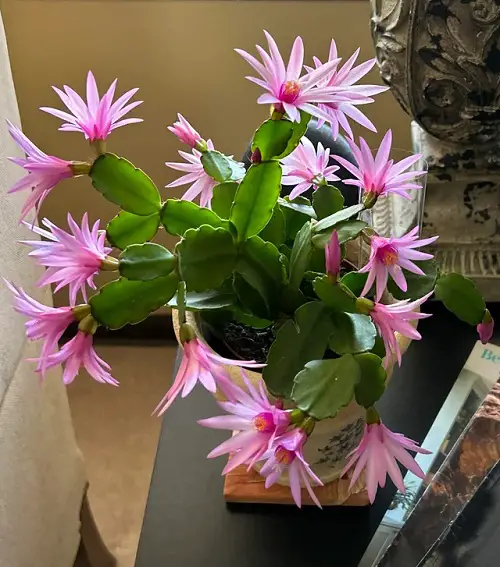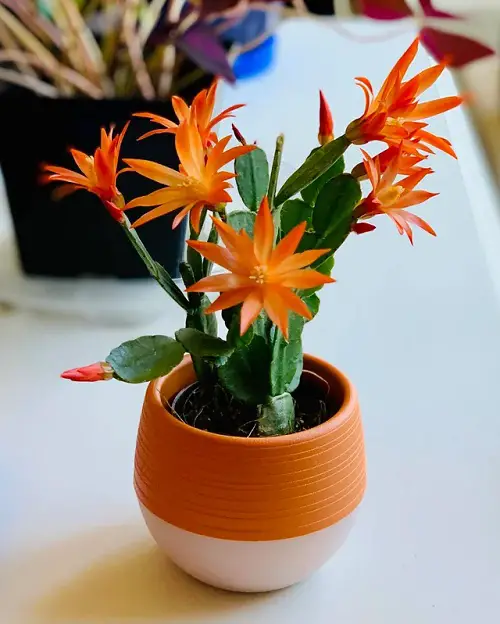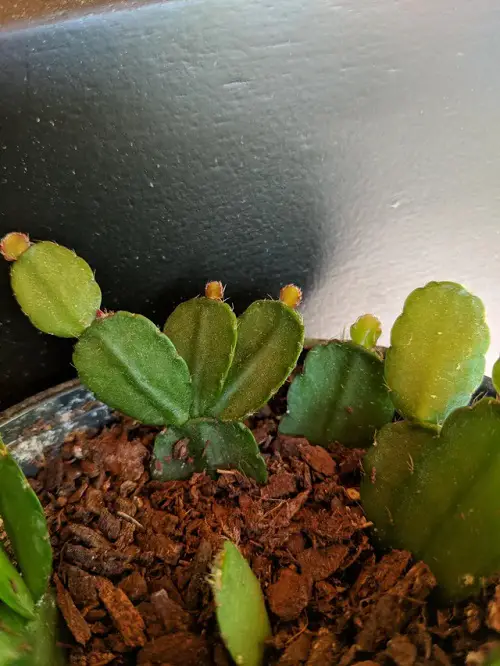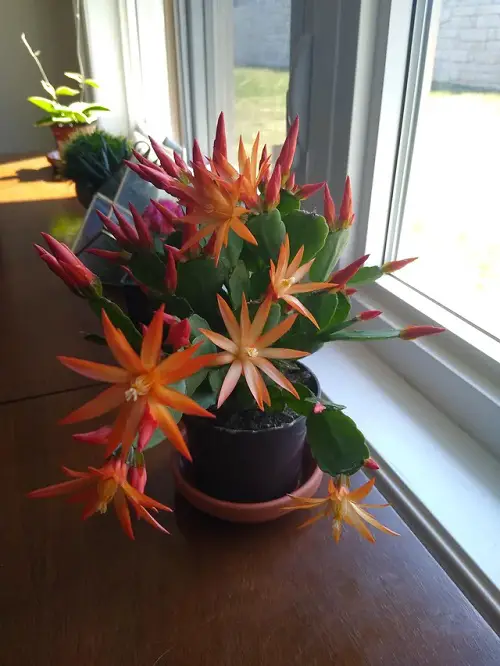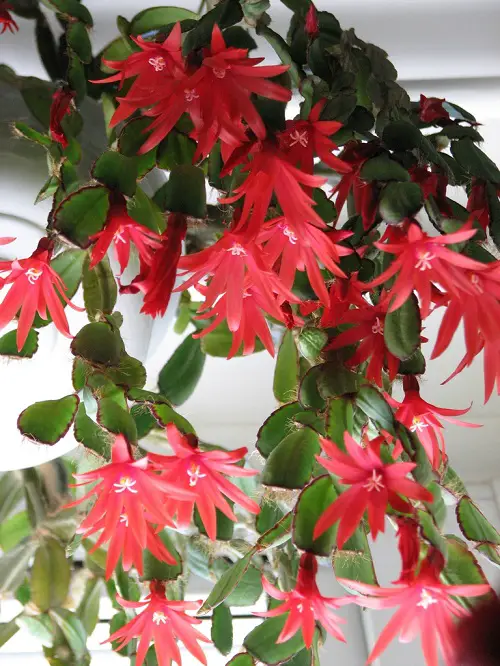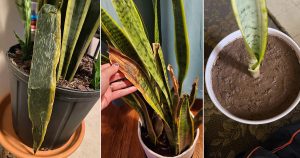Do you also love a healthy, flowering Easter cactus? Read ahead as we reveal the smartest tips for growing this tropical beauty.
Easter Cacti are Brazilian rainforest natives that bloom during the spring. It produces flowers that look like small stars, in shades of red, orange, peach, lavender, and pink. Let’s jump into its facts, information, and propagation methods.
Easter Cactus—Key Facts
| Botanical name | Rhipsalidopsis gaertneri |
| Common names | Whitsun Cactus, Spring Cactus |
| Origins | Brazilian sub-tropical rainforests |
| Height | 1-2 feet |
| Indoors/ Outdoors | Both |
| Temperatures | 75-80°F |
| Watering | Proper drainage and intermittent watering |
| Sunlight | Bright, indirect light |
| Flowering Season | Spring time (March to May) |
Easter Cactus Plant Information
Easter cactus is a perennial succulent that produces bright red and pink funnel-shaped flowers in spring. Growing naturally as epiphytes, these spine-free plants have flat, jointed segments that can become triangular with age, and you’ll often spot soft brown bristles and a hint of purplish fringe along the edges.
Unlike most cacti, Easter cactus likes cooler temperatures and stays relatively compact, usually around a foot tall, but it can reach up to 2 feet with the right care. It’s a favorite of natural pollinators like moths and hummingbirds, especially in the wild.
Easter Cactus Pot Size
Choosing the right pot size for your easter cactus is crucial but not complicated. Start with a 4 to 6-inch pot size. Repotting the cactus should be done every 2-4 years, such that the new pot is two to three inches wider than the old one.
Easter Cactus Propagation
You can propagate easter cactus by seeds and stems. To use the stem cutting method, cut a segmented stem close to the stalk and let it air-dry to form a callus for 2 to 3 days. Then, put it into a cactus and succulent potting mix and place it in a warm location. The roots will form within 4 weeks.
Propagating this cactus is also possible through its seeds, and for this, harvest them once the fruits are formed. Plant them in a properly drained potting mix and cover them lightly. The roots should form within 3 weeks.
Requirements for Growing Easter Cactus
Sunlight
Unlike its counterparts, Easter Cactus doesn’t like direct sunlight. It performs well in bright, indirect light. Exposure to direct sunlight can burn its leaves.
Soil
For good root health, this succulent requires slightly acidic and well-aerated soil. The best soil for easter cactus is a commercial bromeliad soil mix or succulent potting mix because it offers excellent drainage and replicates the plant’s natural habitat.
Watering
The best practice is to water every two weeks during the growing period. You can reduce the watering frequency in winter and water only when the top layer of soil is completely dry.
Temperatures
This cactus likes it warm in summer and fall (around 75-80°F) and cooler in winter (45-55°F). In fall, move it to a cool spot, and you’ll see buds form in late winter, blooming beautifully in early spring. After it flowers, put it back in a warm spot and start watering again.
How to Care for Easter Cactus?
Fertilizer
This Whitsun Cactus of yours does not need much fertilizer, but you can support its growth with a balanced, water-soluble fertilizer. Give it diluted every two to four weeks during the growing phase. Start cutting down in the fall and winter because the plants get dormant.
Pruning
Pruning is also rarely needed with this Spring cactus, but if it gets damaged in certain areas or begins to rot, you need to remove such parts by using clean, sharp shears or scissors.
Pests and Diseases
Although pests rarely bother these Easter cacti, they may face threats from mealy bugs, fungus gnats, and spider mites. Consistently check the plant for pest indicators like webbing or cottony patches. Treat with neem oil or insecticidal soap right away if an infestation starts.
Have you tried growing an Easter cactus? Share your experiences, tips, or questions in the comments below!

